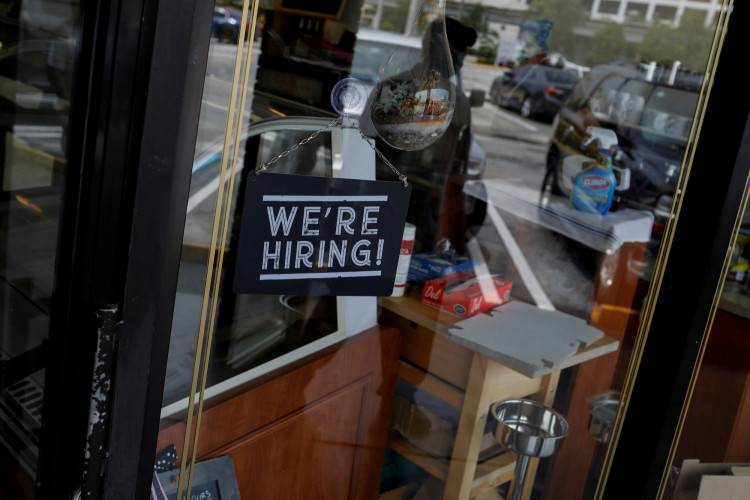Following the release of the U.S. September non-farm employment report this Friday, both the stock and bond markets experienced a dramatic turnaround, initially dropping and then rallying.
After the report was made public, major U.S. stock indices opened lower. In early trading, the Nasdaq dropped over 0.9%, the S&P 500 fell by 0.9%, and the Dow Jones declined by more than 270 points. However, they steadily recovered, turning positive towards the end of the morning session. By midday, all indices were up over 1%, with the Dow Jones surging nearly 440 points and the Nasdaq 100 at one point rising by 2%.
As U.S. stocks rebounded in the morning, U.S. bond prices also bounced back. The U.S. bond yields, which had risen by more than 10 basis points after the pre-market report, gave back more than half of their gains.
Why the Dramatic Turnaround?
Media outlets suggest that investors, while assessing the newly released jobs report, noticed not only job growth but also a slowdown in wage growth. In other words, this employment report didn't solely bring news that spooked the stock and bond markets; the wage aspect was seen as positive.
Wall Street sources earlier noted that the report showed September's non-farm employment additions were almost double market expectations. The unemployment rate for September remained steady from August, contrary to expectations of a slight decline. Wage growth for September was below expectations, with average hourly earnings month-over-month increasing by 0.2%, consistent with August, rather than the anticipated acceleration to 0.3%. Year-over-year, it grew by 4.2%, marking the lowest growth in two years, rather than stabilizing at August's 4.3%.
Strategists from TD Securities commented that even though job growth remains above trend levels and there's no upward pressure on wages, the steady deceleration in wage growth should comfort Federal Reserve officials.
With the unexpected slowdown in wage growth suggesting that inflationary pressures aren't intensifying, the market's focus now shifts to the CPI and PPI reports to be released next week.
A market strategist from Murphy & Sylvest Wealth Management mentioned that the data next week will be crucial. If inflation remains moderate and employment continues to grow, that's a scenario the Federal Reserve would welcome.
Regarding the midday turnaround in U.S. stocks, Megan Horneman, Chief Investment Officer at Verdence Capital Advisors, believes that the pullback in U.S. bond yields provided some support for U.S. stocks. Additionally, the stock market has been somewhat weak in recent weeks, with some sectors being oversold.
Dante DeAntonio, a labor economist at Moody's Analytics, believes that given the current divergent views, the September jobs report will have minimal impact on monetary policy. The wage growth and unemployment rate might have brought enough good news to prevent the Federal Reserve from hiking interest rates again.
DeAntonio pointed out that after digesting the September report, market expectations for the Federal Reserve's actions shifted slightly. However, there's still a strong expectation that rates will remain unchanged in November.
On Friday, the CME's "Fed Watch Tool" indicated that the probability of the Federal Reserve raising rates by 25 basis points in November has risen from about 20% a day earlier to nearly 32%. However, keeping rates unchanged remains the most likely outcome, with a probability of almost 70%.
By December, the probability of the Federal Reserve raising rates by at least 25 basis points this year has risen from about 33% a day earlier to nearly 43%. The chance of standing pat exceeds 57%, down from 67% a day earlier.
In fact, shortly after the release of the jobs report, Peter Tchir, Head of Macro Strategy at Academy Securities, questioned whether the market's initial reaction would last. Tchir mentioned that it's challenging to counteract the power of algorithmic trading when overall employment data drives yields higher. However, he anticipated that over time, many market participants would question the report's accuracy. Even if the markets couldn't rally for the entire day or week, the initial declines in both the bond and stock markets would significantly narrow.






